ORRYELLE DEFENESTRATE-BASCULE’S
SOLVE ET COAGULA
A Review by Jack Grayle (author of The Hekataeon)
If you ask an occultist what their favorite “pagan” movie is, most would probably mention Wicker Man, The Witch, or Midsommar. And yet these are not actually pagan movies, but mainstream suspense films with big budgets that are promoted with the intention of pleasing regular audiences and film critics alike. They are ultimately intended to be popular and make a profit – which they do.
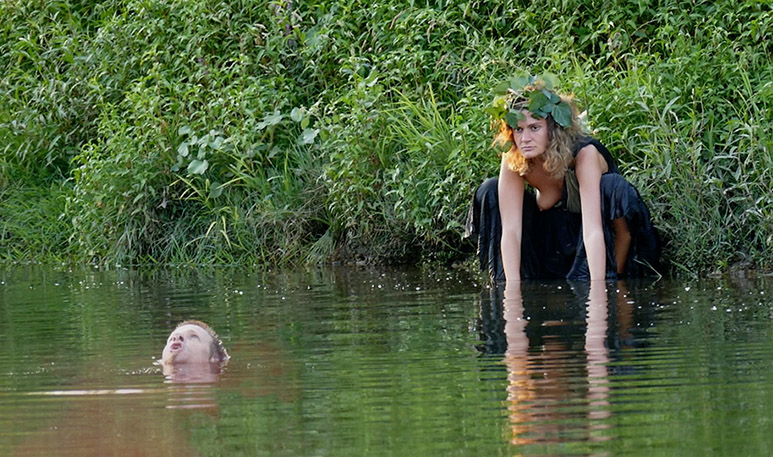
This is not to say that they aren’t GOOD movies. But they are not PAGAN movies, in that they are not made with the intention and effect of deepening mortals’ relationships with the unseen powers that exist above, below and within the earth. In fact, up until last week I was actually unaware of any full-length movies created by and for Western polytheists, besides a few well-intended but low-impact documentaries.
But then, last week, I saw Orryelle Defenestrate-Bascule’s Solve et Coagula.
For years, now, Orryelle has been an outsider’s outsider, creating magnificent paintings, performances, rituals, rites, scripts and sculptures – to include a terrifyingly oversized statue of Hekate Rexichthon that is the centerpiece of his annual sabbats in Belgium. He has written a number of grimoires, to include Solve, Distillatio, Coagula, Conjunctio, and The Book of Going Back by Night. His graphic art style is highly recognizable for its fluid eroticism. He claims (with some credibility) to be an inheritor of Austin Osman Spare’s Zos Kia Cult through his intuitive, non-linear, and highly sexualized art.
I met Orryelle several years ago in Portland, where he was performing Book of the Spider, a mesmerizing solo piece that celebrated the arachnid aspect of the Goddess through the media of dance and violin music. It was a virtuoso performance, and by the end of the evening, as I joined the audience in a standing ovation, I knew immediately that I was in the presence of a true visionary.
Orryelle and I shared a meal afterwards, and he met my praise with quiet humor and a certain reserve which I respected. And yet he was candid: when I asked him why he chose the name Defenestrate, he quietly said, ‘Because I once leapt out a window.’
I didn’t ask if he meant figuratively or literally. And it ultimately doesn’t matter, because with Solve et Coagula, he has done so again.
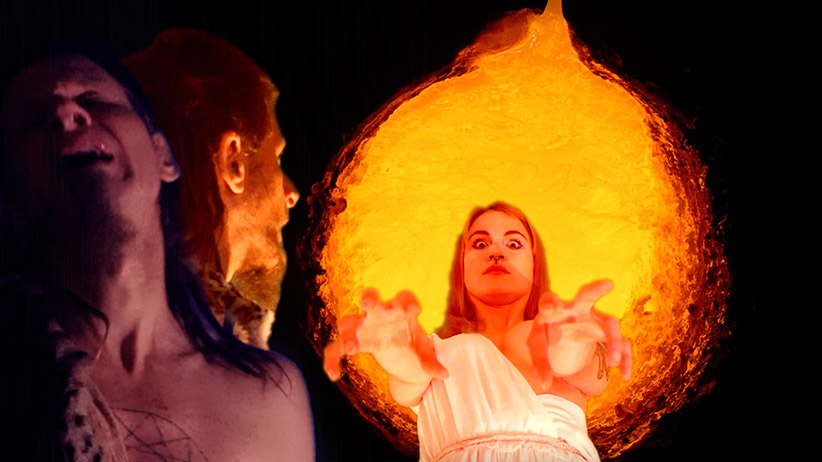
This film is a two-hour meditation on the Orpheus/Euridike myth. It is also, in my opinion, an erotic masterpiece, and by far the best pagan film created by a Westerner in recent memory.
Which is NOT to say that it is for everyone. Those who prefer Hollywood movies with linear story arcs, realistic dialogue, and standard tropes will hate this film. Likewise, those who clutch their pearls at the site of a naked breast or erect phallus will want to avoid it like the plague, because it is filled with both, not to mention multiple shots of copulating couples.
And yet it is not in the least pornographic. The concept in Solve et Coagula is that the erotic dismemberment of Orpheus in antiquity is remedied by the erotic re-memberment of Baphomet in a subsequent age, so that the ecstatic congress of modern mystics re-integrates the scattered limbs of the primeval lovers in a mystic union – a hieros gamos – that resolves opposites in a blasphemous/sacred rite that ultimately achieves cosmic at-one-ment.
Basically, it shows the broken fucking their way to wholeness.
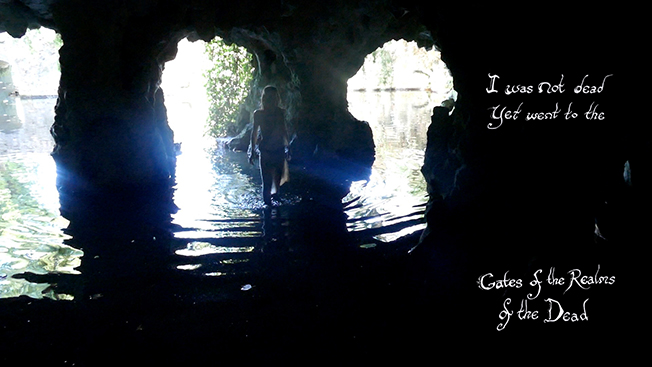
It’s also fun to watch. By turns sexy and strange, the film weaves a meandering path through a series of setpieces in Thracian fields, Hadean caves, the Hebrus River, and a medieval Templar sanctum.
To be clear: This. Is. Not. A. Mainstream. Movie. It is a cinematic meditation on life, death, sex, desire, fate, entropy, and redemption. Much of it consists of Orryelle himself singing his own Orphic verses, while images drift past the viewer’s eyes in a fever-dream of color, shape, and shadow. Some are startlingly beautiful: the shots of Orpheus slowly picking his way through the flooded caves of Sintra, Portugal, are truly haunting. Likewise, the infernal sequences of layered images that seethe and separate, overlapping in a visual collage, has a hypnotic, trance-inducing effect when underscored by his repetitive chants.
Which is not to say that everything is equally successful. Orryelle’s most literal scenes are the also the most forgettable, with the actually killing of Orpheus being a weak link in the film’s narrative chain, due largely to the constraints of budget and unnecessary editing redundancies.
But such momentary lapses are more than made up for by the film’s strengths – and they are many.
Flush with beautiful bodies and lush colors, the film’s visuals are (literally) orgiastic. And the sheer inventiveness of the effects is wonderful.
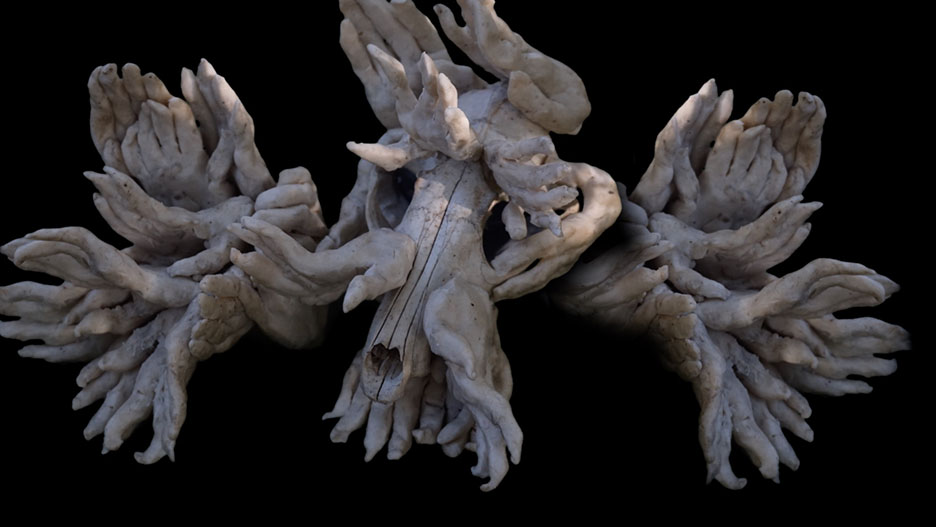
A highlight of the work is Orryelle’s astonishing creation of Cerberus, the three-headed dog of the dead, through a series of clay hands animated through the old-school magic of stop-action photography. It is a clever idea that becomes transcendent when the various hands scatter, spider-like, across the webs of the sculptured Hekate Rexichthon’s dress in a sequence that somehow manages to be fascinating, funny, and frightening, all at once.

The effect culminates in the finale where – through an incredible visual device – dozens of nude bodies become the actual materia of Baphomet, the androgynous, goat-headed scion of spiritual integration imagined into existence by Eliphas Levi in his nineteenth-century book Transcendental Magic. This iconic figure was portrayed by Levi as having the words solve and coagula (dissolve and coagulate) written on its left and right arms, respectively. The phrase, which references the alchemical concept that old forms must end to give way to the new, takes on a new, mystic meaning within the context of so many nude bodies conjoining to enflesh the goatish embodiment of spiritual integration. This erotic coagula, which must have required hundreds of painstaking hours to create, is worth the price of admission alone.
That price of admission, by the way, is a whopping $3, which may be spent to good effect at:
https://vimeo.com/ondemand/solveetcoagula
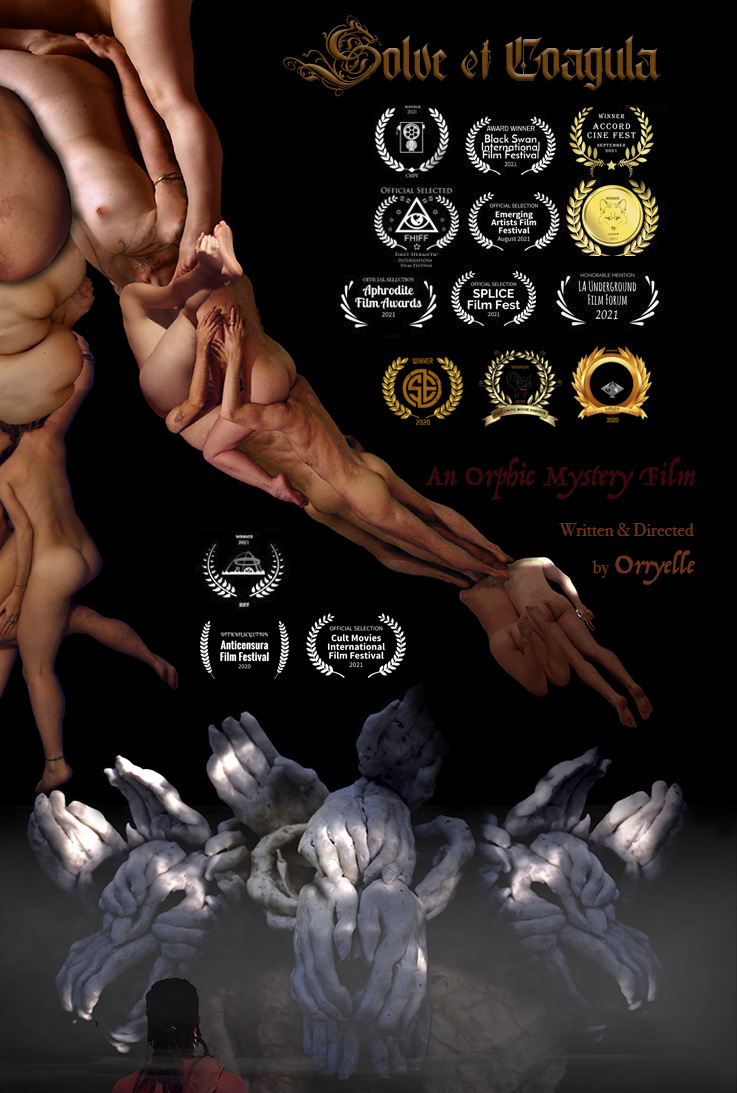
If you’d also like read about the movie’s symbolism, you can snag Oryelle’s lavish limited-edition book (only 270 copies) with accompanying DVD/Bluray here:
www.crossroads.wild.net.au/solveetcoagula.htm
Solve et Coagula has won 15 international film awards so far, and will doubtless win more. But what it deserves most of all is an audience. This film deserves be widely viewed by any open-minded person who is drawn to art, magic, mythic themes, altered states, and the journey to re-integrate the dismembered limbs of our sensual-spiritual selves into a single, unified whole.
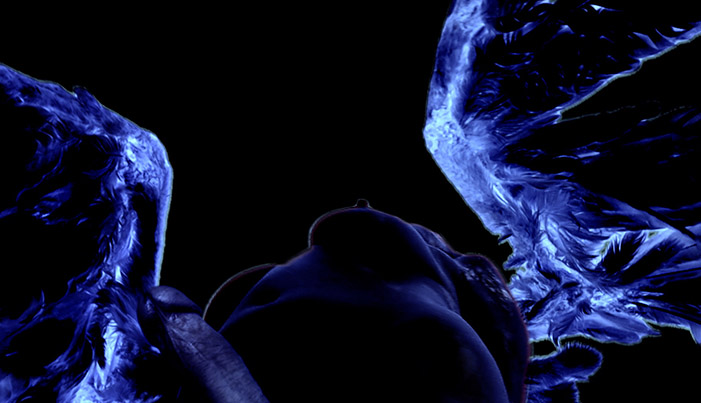
That being said? If seeing semen makes you cry, then give it a wide berth and go back to re-watching Ant Man. (And delete the Pornhub app off your phone while you’re at it.)
But if you want to see a true visionary at work – and accompany him on his journey to the Underworld and back again – check out Orryelle’s beautiful and strange Solve et Coagula.
It’s worth it.
Jack
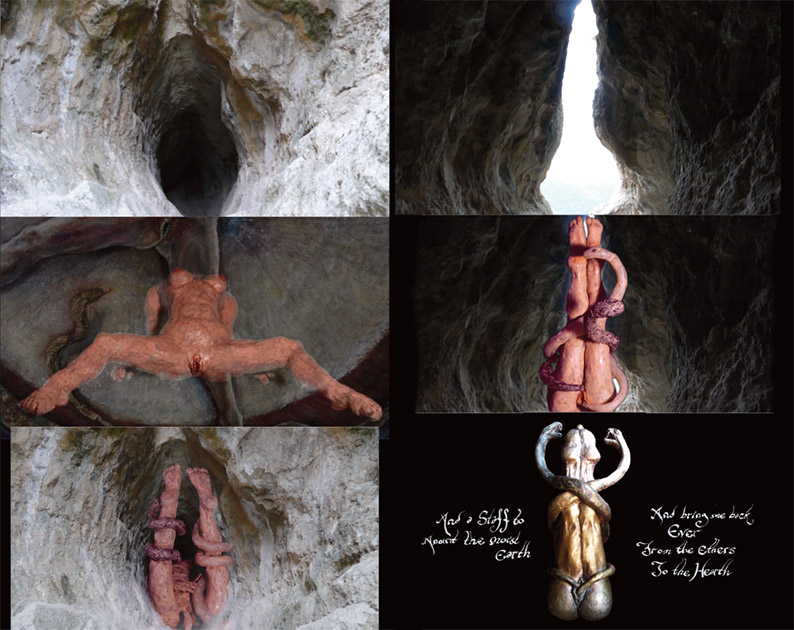
Above: Sample pages from the 'SOLVE et COAGULA' limited edition book.
The double-page spread above shows the Thracian womb-cave in Bulgaria, and how from inside the entrance appears as a phallus -an echo in stone and sky of how the Baphometic phallus in the film is formed from the body of a woman, in wax then bronze then flesh.
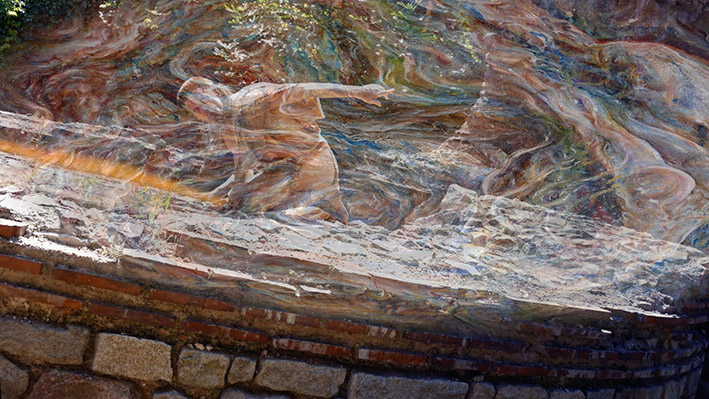
'I don't know what I'm looking at in relation with all previous movies I've seen, but it's genius ...brilliant tension between serious drama and comical aspects, very well edited'
-David VonHammer, M.A. Cinema Studies
Images (c) 2021 Orryelle Defenestrate-Bascule
SOLVE et COAGULA Main page